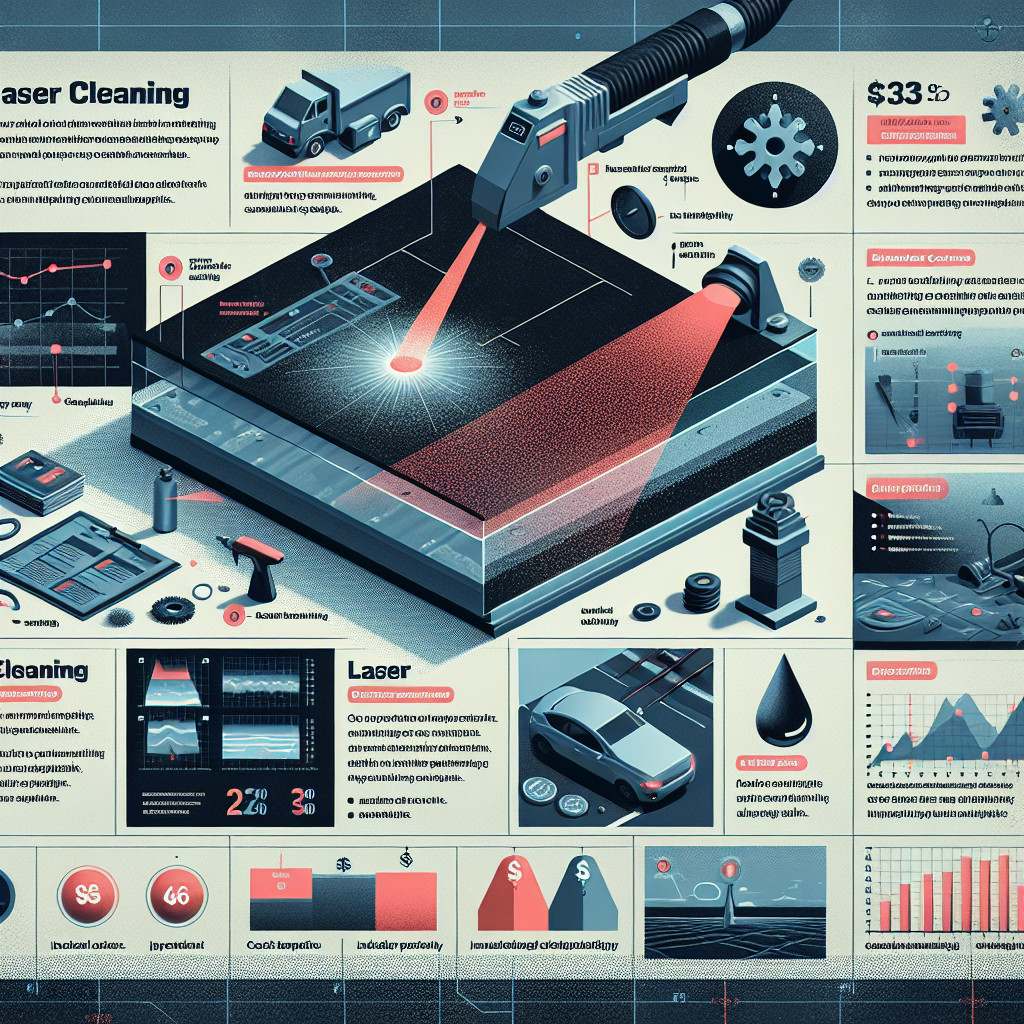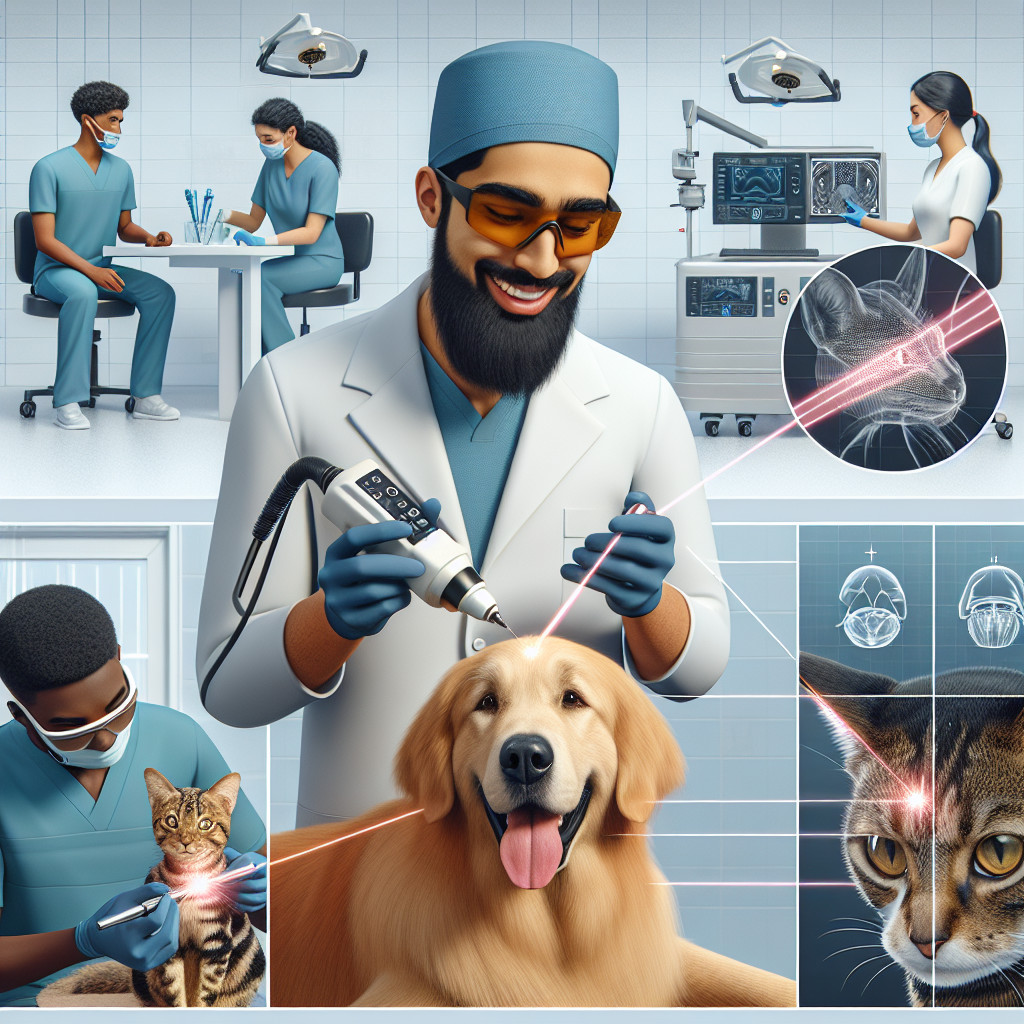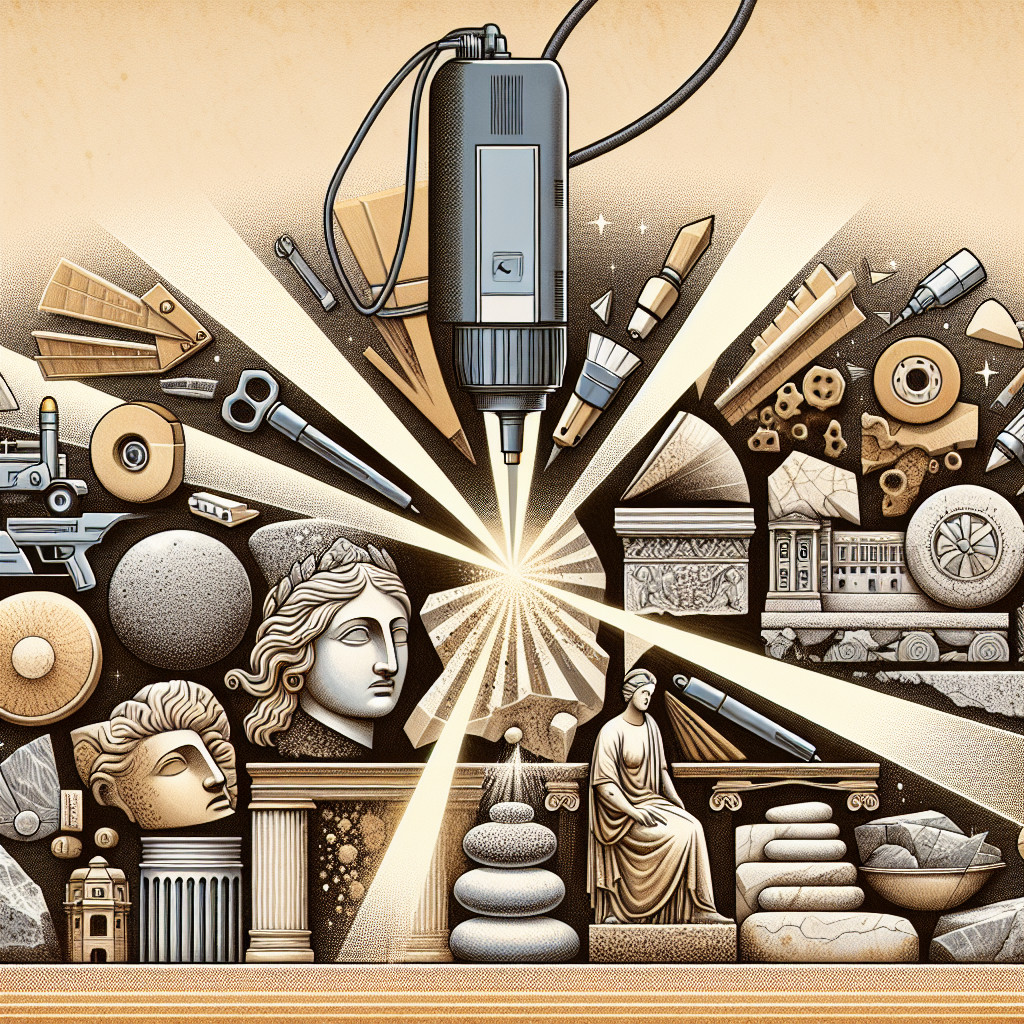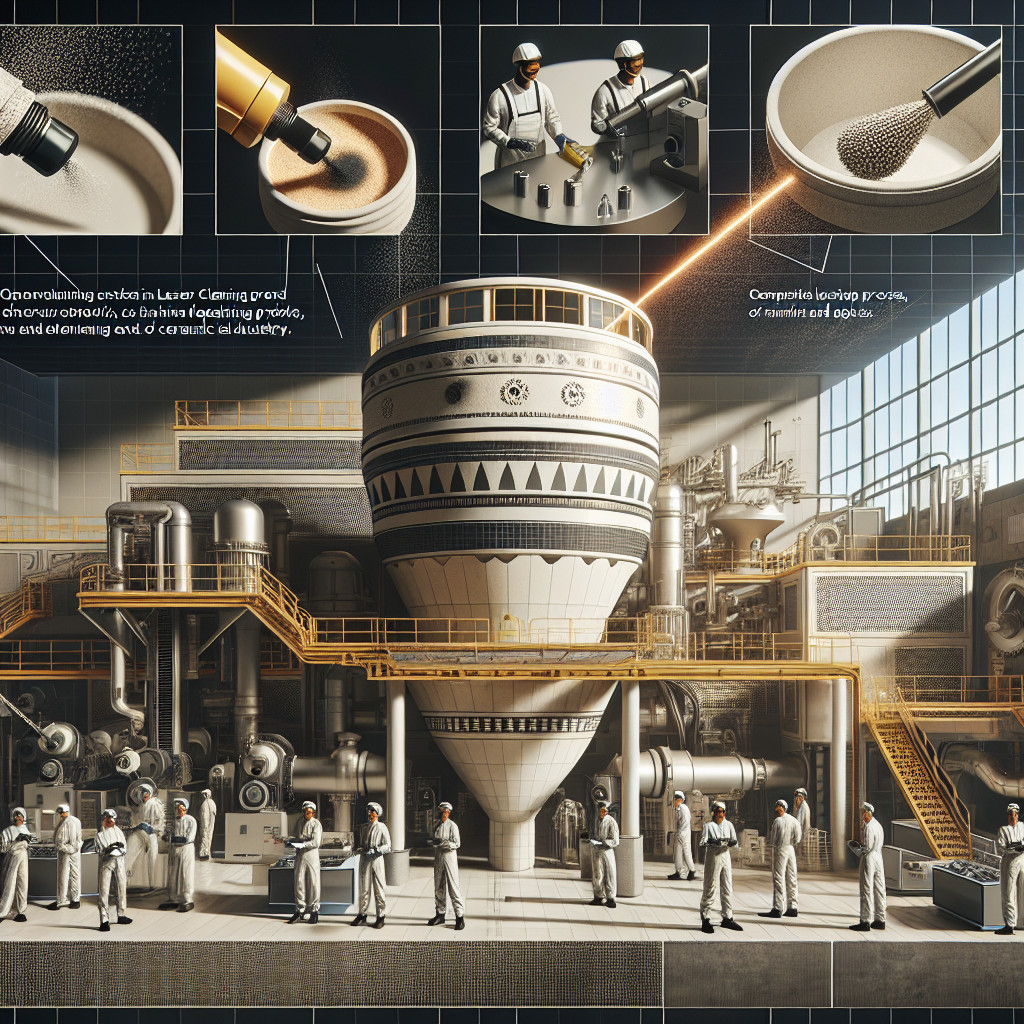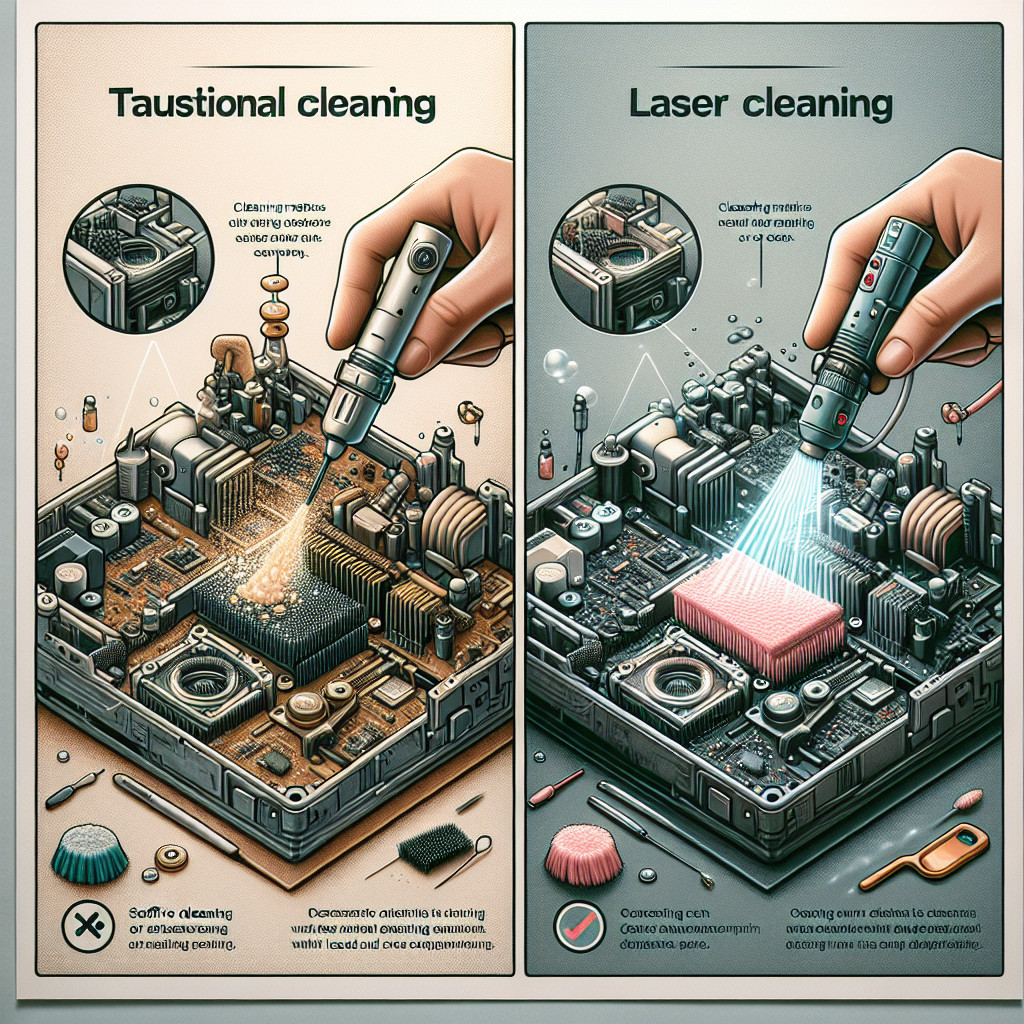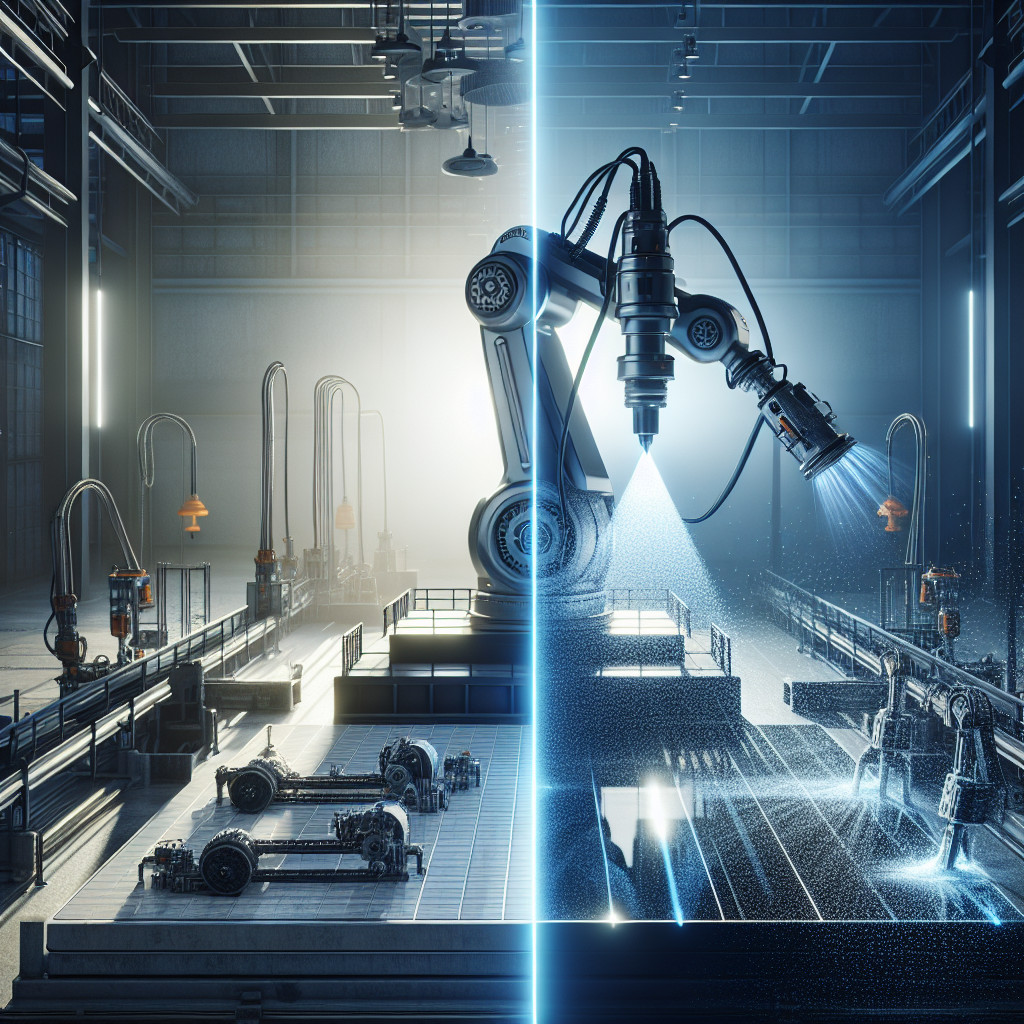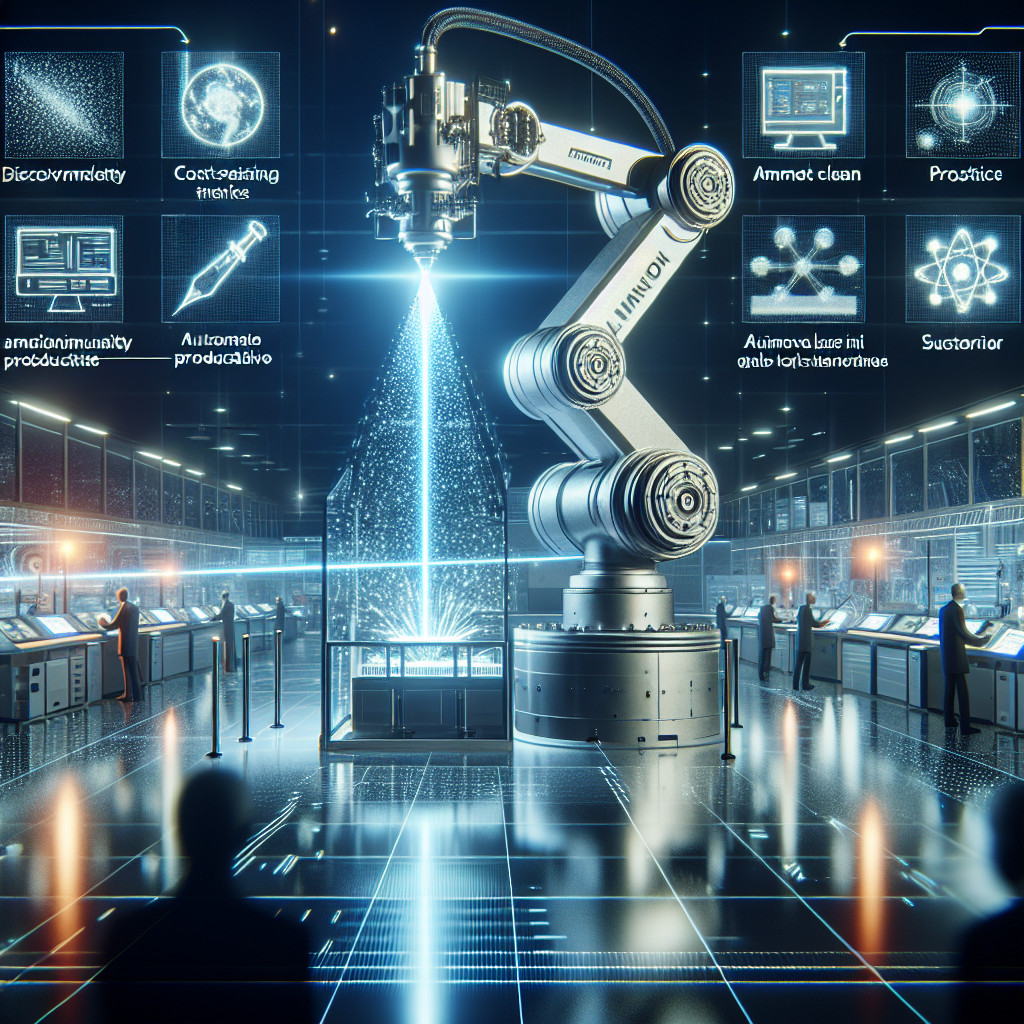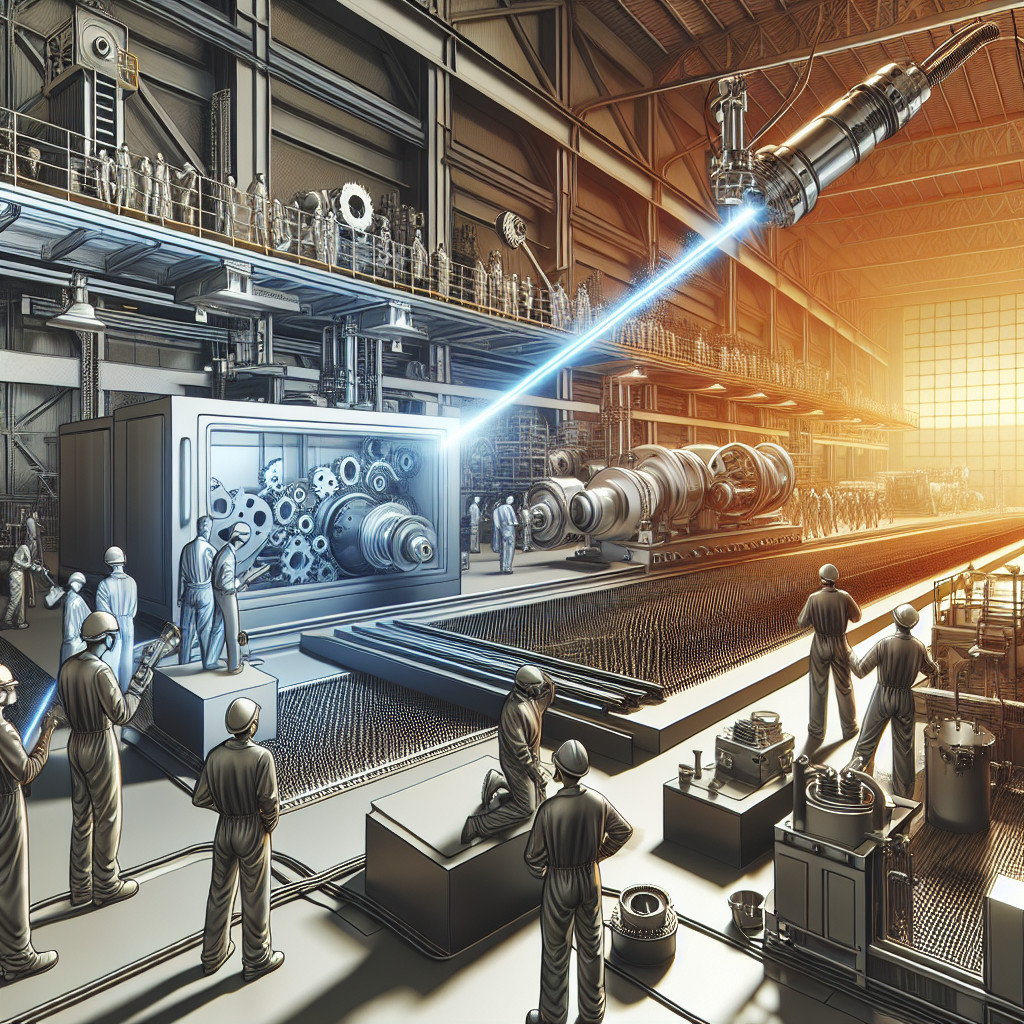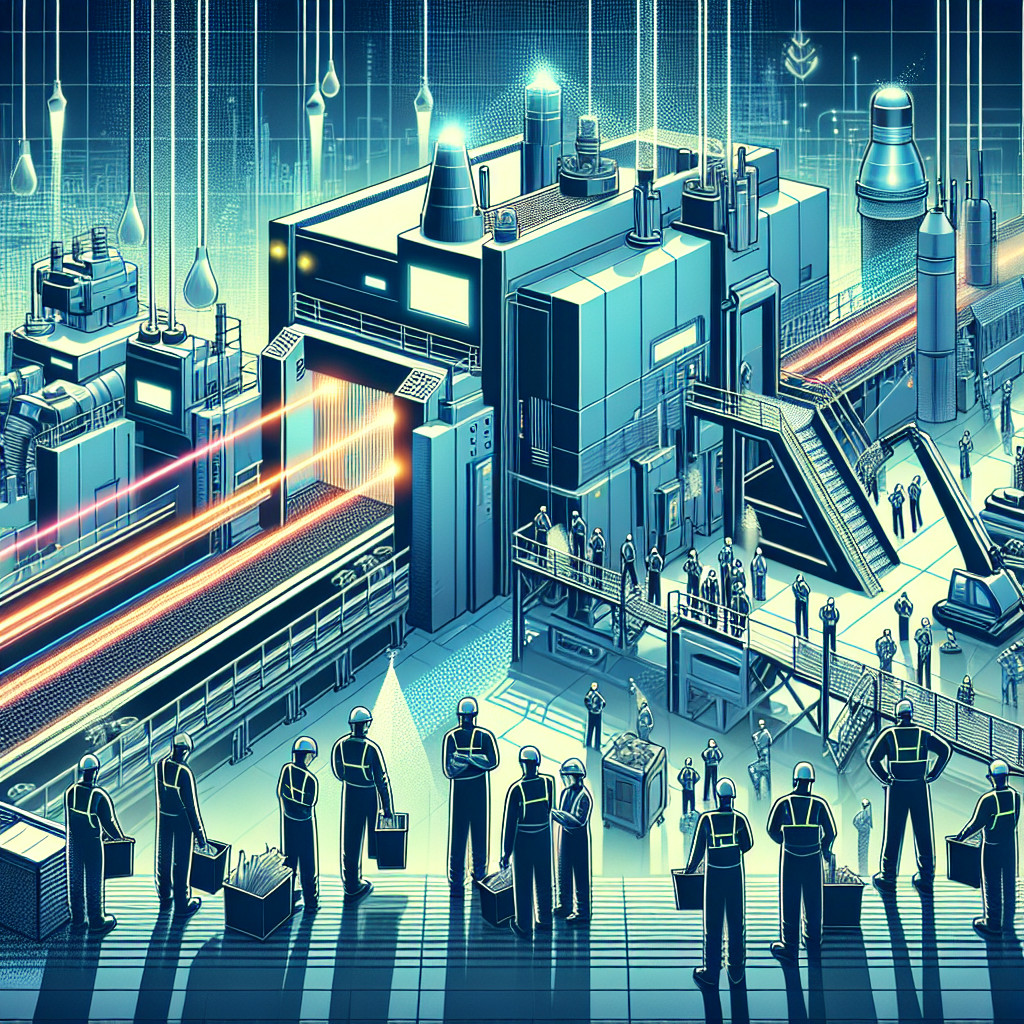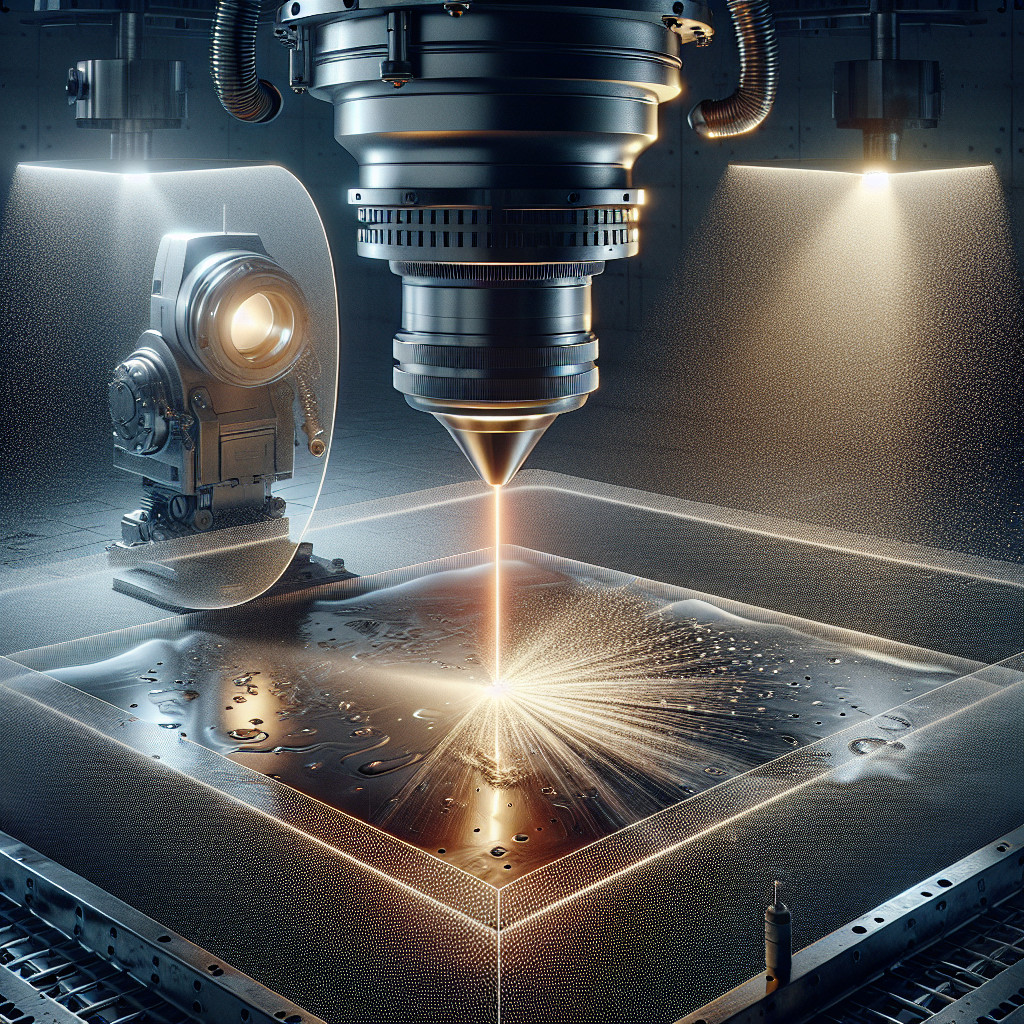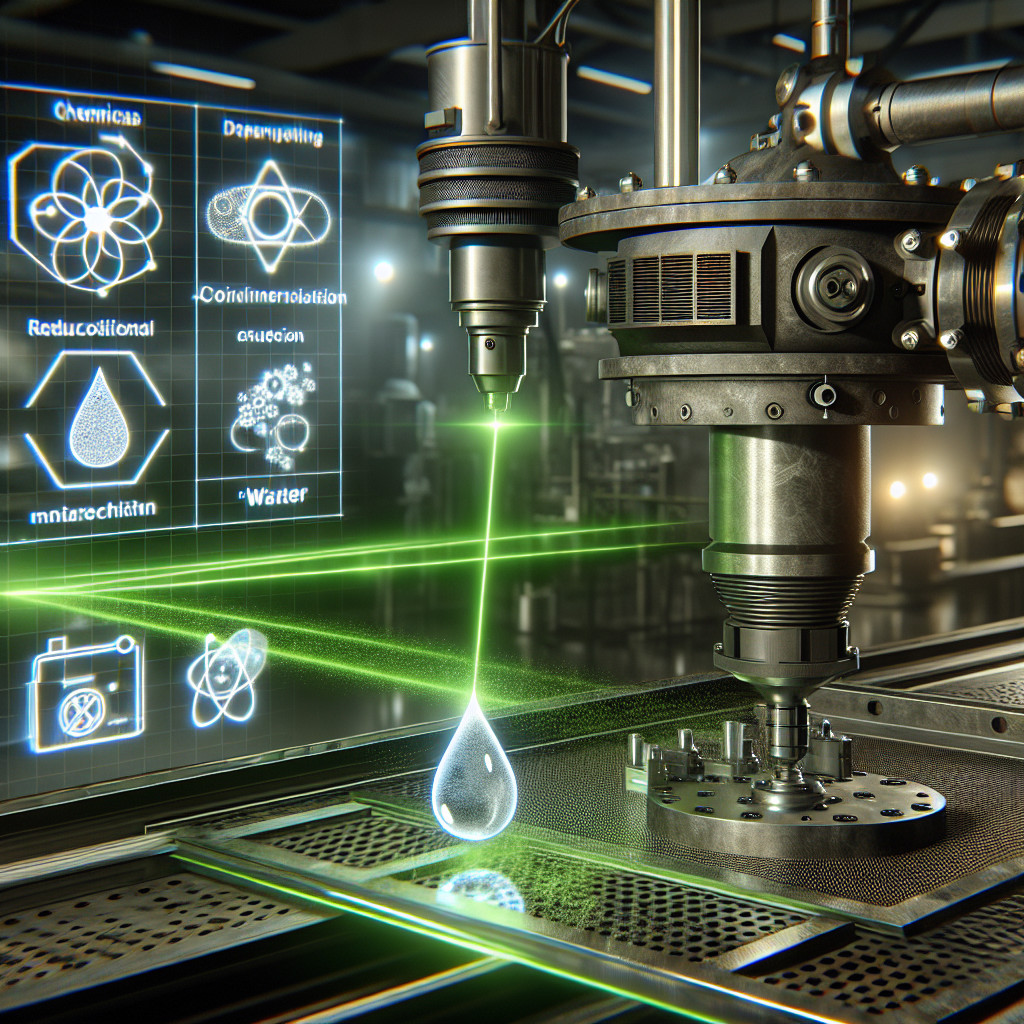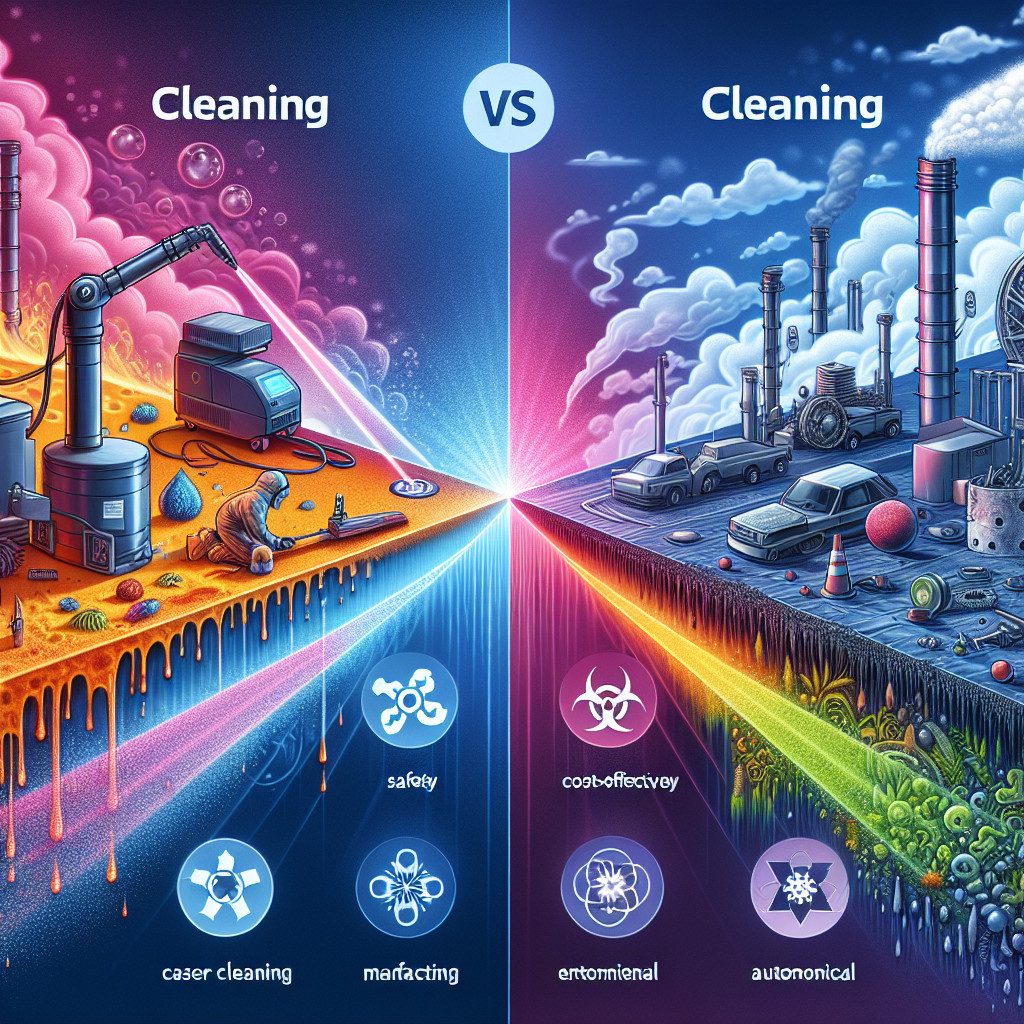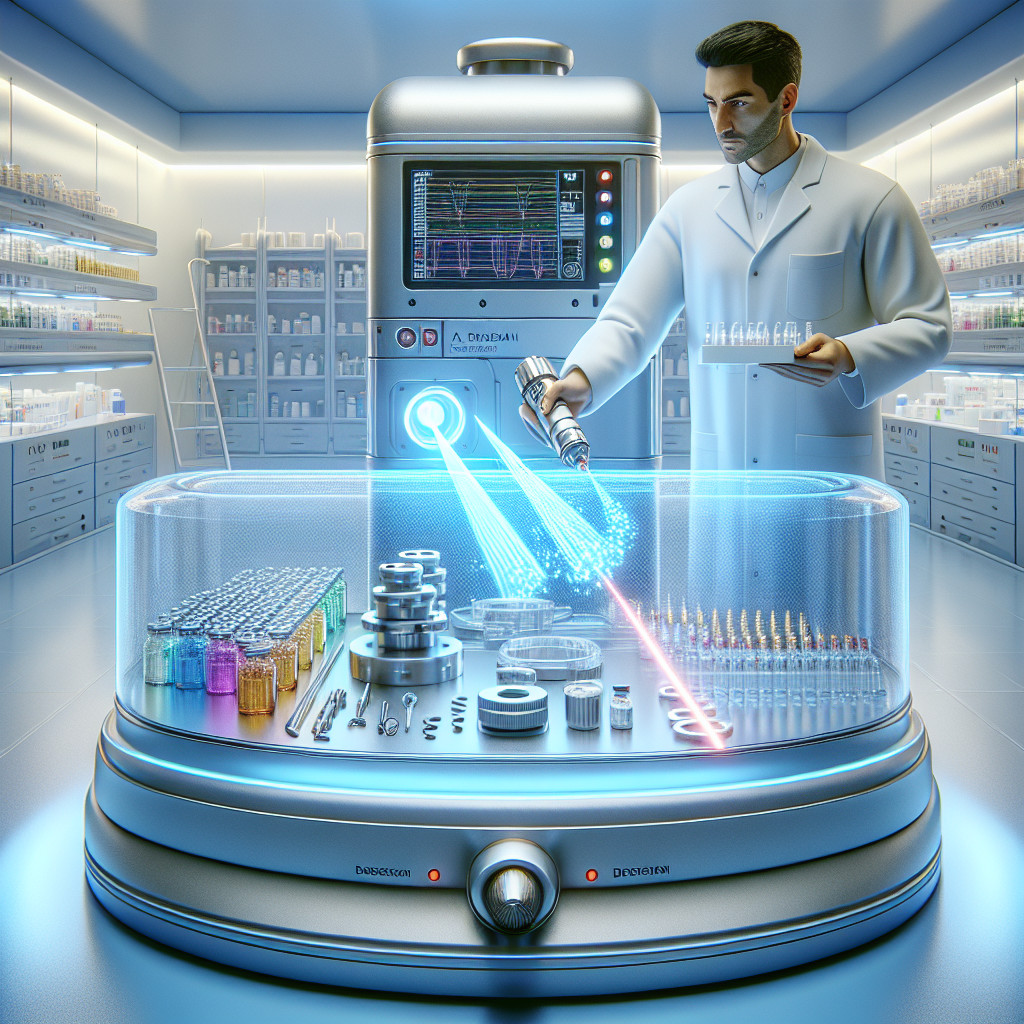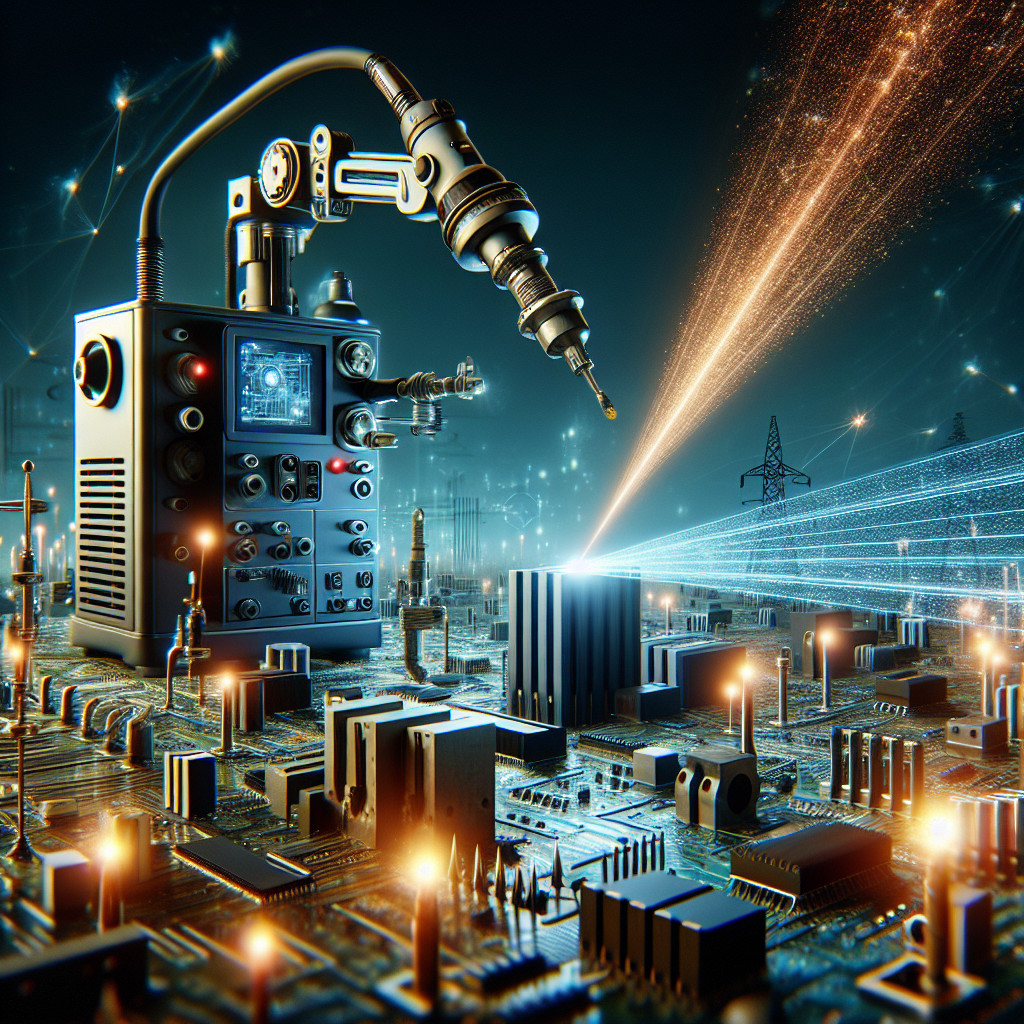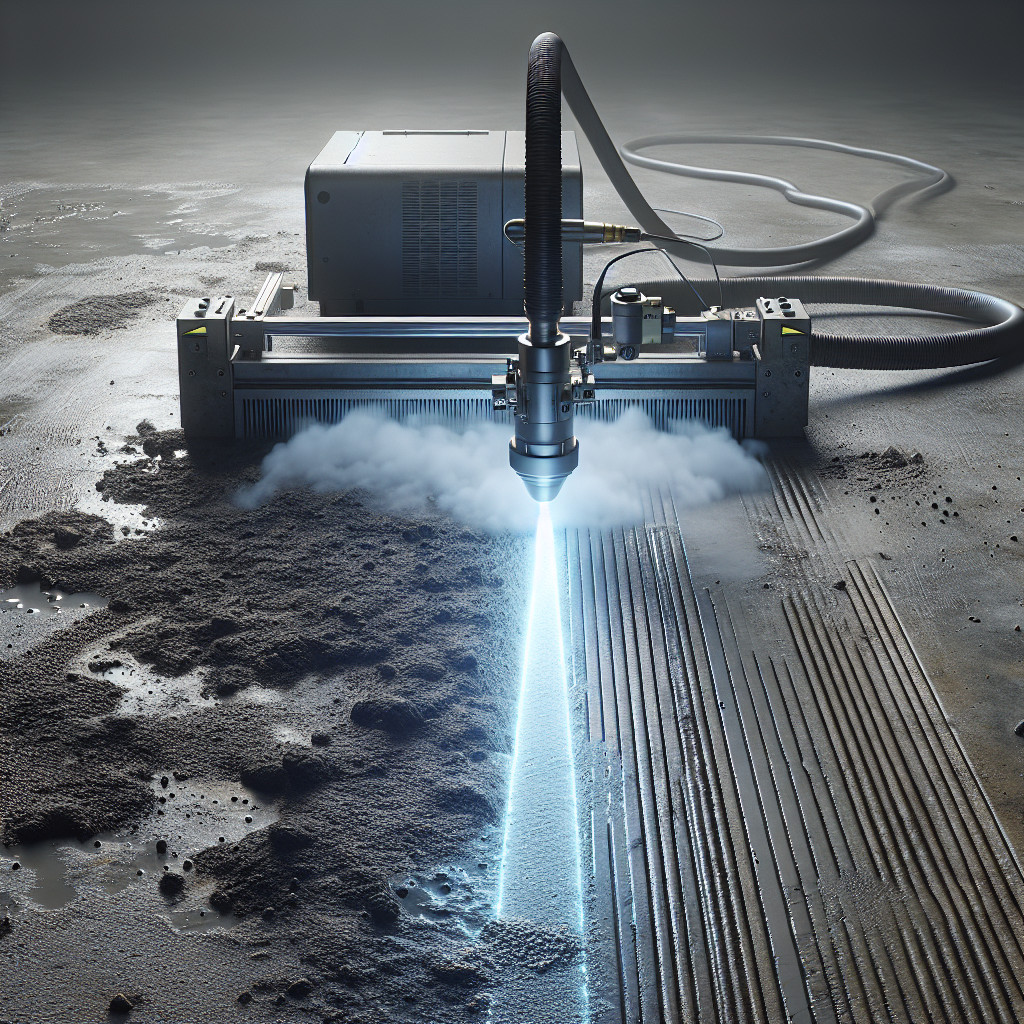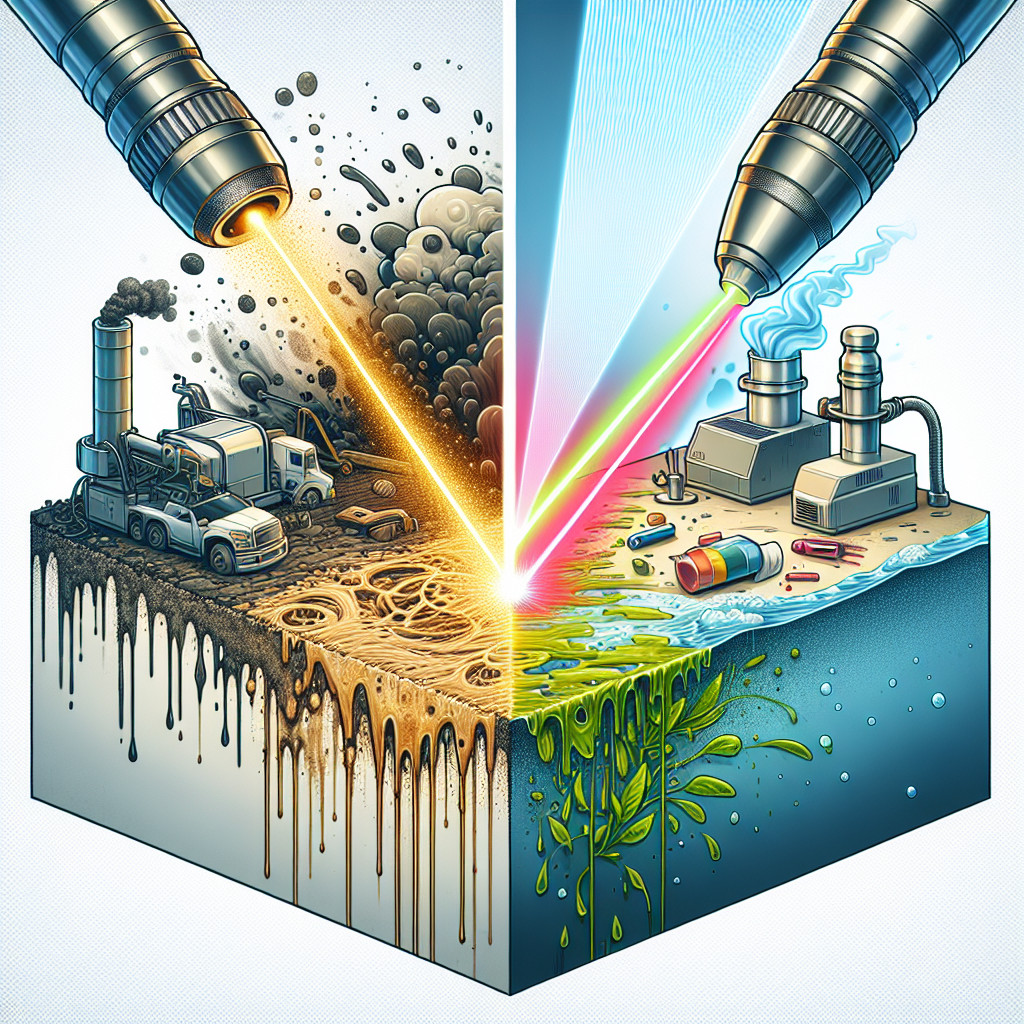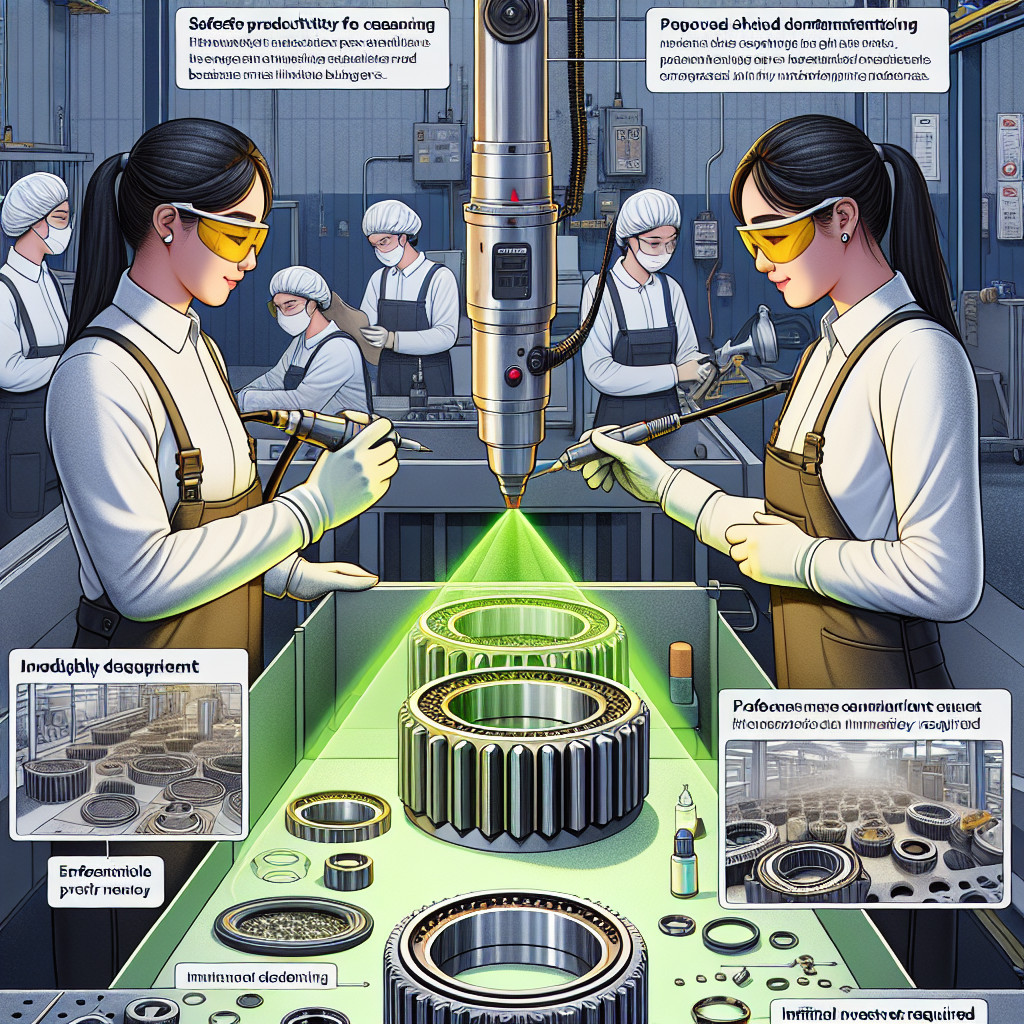- Laser cleaning: An overview of the technology
- Understanding the principles of laser cleaning
- Laser cleaning in the energy sector: Cleaning solar panels and wind turbines
- Laser cleaning in the construction industry: Removing graffiti from buildings
- Laser cleaning in the automotive repair industry: Removing adhesive residues
- Laser cleaning in the aviation industry: Removing contaminants from aircraft engines
- Laser cleaning in the chemical industry: Removing residues from chemical reactors
- Laser cleaning in the electronics industry: Cleaning circuit boards
Laser cleaning: An overview of the technology
Laser cleaning is a revolutionary technology that has gained significant attention in recent years. It offers a non-contact, non-abrasive, and environmentally friendly method of removing contaminants from various surfaces. This article aims to provide an in-depth overview of laser cleaning technology, its applications, advantages, and limitations.
What is laser cleaning?
Laser cleaning is a process that utilizes high-intensity laser beams to remove unwanted materials, such as rust, paint, grease, or dirt, from surfaces. The laser beam interacts with the contaminants, causing them to vaporize or ablate, leaving behind a clean surface. This technology is widely used in industries such as automotive, aerospace, electronics, and cultural heritage preservation.
How does laser cleaning work?
Laser cleaning works based on the principle of selective absorption of laser energy. Different materials have different absorption coefficients for laser light, which means they absorb different amounts of energy. The laser beam is focused on the surface to be cleaned, and the contaminants absorb the laser energy, causing them to heat up and eventually vaporize. The clean surface underneath remains unaffected due to its lower absorption coefficient.
Advantages of laser cleaning:
1. Non-contact and non-abrasive: Laser cleaning does not require physical contact with the surface, eliminating the risk of damage or scratching. It is particularly useful for delicate or sensitive materials.
2. Environmentally friendly: Unlike traditional cleaning methods that involve the use of chemicals or abrasive materials, laser cleaning is a clean and green technology. It does not produce any hazardous waste or emissions.
3. Precision and control: Laser cleaning allows for precise control over the cleaning process. The laser parameters can be adjusted to target specific contaminants or surface types, ensuring optimal cleaning results.
4. Versatility: Laser cleaning can be used on a wide range of materials, including metals, plastics, ceramics, and even sensitive substrates like glass or paper.
Limitations of laser cleaning:
1. Cost: Laser cleaning equipment can be expensive to purchase and maintain, making it less accessible for small-scale applications or businesses with limited budgets.
2. Safety considerations: Laser beams can be harmful to the eyes and skin. Proper safety measures, including the use of protective eyewear and adherence to safety guidelines, are essential when working with laser cleaning systems.
3. Surface limitations: Laser cleaning may not be suitable for all types of surfaces. Highly reflective or transparent materials may not absorb enough laser energy for effective cleaning.
Applications of laser cleaning:
1. Rust and corrosion removal: Laser cleaning is highly effective in removing rust and corrosion from metal surfaces, restoring them to their original condition.
2. Paint and coating removal: The precise control offered by laser cleaning makes it an ideal choice for removing paint or coatings from surfaces without damaging the underlying material.
3. Cultural heritage preservation: Laser cleaning is widely used in the restoration and preservation of historical artifacts, sculptures, and artworks. It allows for gentle and precise cleaning without causing any damage to the delicate surfaces.
4. Electronics manufacturing: Laser cleaning is used in the electronics industry to remove contaminants from circuit boards, connectors, and other electronic components, ensuring optimal performance and reliability.
Keywords: laser cleaning, technology, non-contact, non-abrasive, environmentally friendly, contaminants, surfaces, rust, paint, grease, dirt, vaporize, ablate, automotive, aerospace, electronics, cultural heritage preservation, selective absorption, laser energy, advantages, limitations, precision, control, versatility, cost, safety considerations, rust removal, corrosion removal, paint removal, coating removal, cultural heritage preservation, electronics manufacturing.
Long-tail phrases: laser cleaning technology overview, advantages and limitations of laser cleaning, laser cleaning applications, laser cleaning in automotive industry, laser cleaning in aerospace industry, laser cleaning in electronics industry, laser cleaning in cultural heritage preservation, laser cleaning for rust removal, laser cleaning for paint removal, laser cleaning for corrosion removal, laser cleaning for electronics manufacturing.
Understanding the principles of laser cleaning
One of the key advantages of laser cleaning is its ability to selectively remove contaminants without damaging the underlying material. The laser beam can be precisely controlled to target specific areas, ensuring that only the contaminants are affected. This makes laser cleaning particularly suitable for delicate and sensitive surfaces, such as historical artifacts or electronic components.
Another important principle of laser cleaning is its ability to remove a wide range of contaminants. Whether it’s rust, paint, grease, or even biological matter, laser cleaning can effectively eliminate these substances from surfaces. The versatility of laser cleaning makes it an attractive option for various industries, including automotive, aerospace, and cultural heritage preservation.
In addition to its cleaning capabilities, laser cleaning also offers several other advantages. Firstly, it is an environmentally friendly method as it does not require the use of chemicals or solvents. This eliminates the risk of hazardous waste disposal and reduces the overall environmental impact. Secondly, laser cleaning is a non-contact process, which means that there is no physical contact between the cleaning equipment and the surface. This minimizes the risk of surface damage and ensures a gentle and precise cleaning process.
Furthermore, laser cleaning is a highly efficient method that can significantly reduce cleaning time and costs. Traditional cleaning methods often involve labor-intensive processes and the use of chemicals, which can be time-consuming and expensive. Laser cleaning, on the other hand, is a fast and automated process that requires minimal human intervention. This not only saves time but also reduces labor costs and increases productivity.
In conclusion, laser cleaning is a cutting-edge technology that offers numerous advantages over traditional cleaning methods. Its ability to selectively remove contaminants without damaging the underlying material, its versatility in removing various types of contaminants, and its environmentally friendly and efficient nature make it a highly desirable cleaning solution.
Keywords: laser cleaning, non-contact, non-abrasive, contaminants, surface, selective, delicate, sensitive, rust, paint, grease, biological matter, automotive, aerospace, cultural heritage preservation, environmentally friendly, chemicals, solvents, non-contact process, efficient, time-saving, cost-effective.
Long-tail phrases:
1. and its applications in various industries.
2. The advantages of laser cleaning over traditional cleaning methods.
3. The environmental benefits of laser cleaning and its contribution to sustainable practices.
4. The role of laser cleaning in preserving delicate and historical artifacts.
5. Exploring the efficiency and cost-effectiveness of laser cleaning in industrial settings.
Laser cleaning in the energy sector: Cleaning solar panels and wind turbines
Solar panels, for instance, rely on sunlight to generate electricity. However, when dirt, dust, or even bird droppings accumulate on the surface of the panels, it reduces their ability to absorb sunlight effectively. This results in decreased energy production and lower overall efficiency. Traditional cleaning methods, such as using water and chemicals, can be time-consuming, labor-intensive, and potentially damaging to the panels. Laser cleaning offers a faster, more precise, and environmentally friendly alternative.
By using laser beams, technicians can target specific areas of the solar panels that require cleaning. The laser energy quickly heats up the contaminants, causing them to evaporate or disintegrate. The process is highly efficient, leaving no residue behind and ensuring that the panels are restored to their optimal performance levels. Additionally, laser cleaning can be performed remotely, reducing the need for manual labor and minimizing the risk of damage to the panels.
Similarly, wind turbines also benefit from laser cleaning. These towering structures are often located in remote and harsh environments, making regular maintenance a challenging task. Over time, dirt, dust, and even salt deposits can accumulate on the turbine blades, affecting their aerodynamic efficiency and overall power generation. Laser cleaning provides a solution that is both effective and cost-efficient.
With laser technology, technicians can access hard-to-reach areas of the turbine blades without the need for scaffolding or other complex equipment. The laser beams can remove the contaminants without causing any damage to the delicate surface of the blades. This not only improves the turbine’s performance but also extends its lifespan, reducing the need for frequent repairs or replacements.
In conclusion, laser cleaning has emerged as a valuable tool in the energy sector for maintaining and optimizing the performance of solar panels and wind turbines. Its non-contact and non-abrasive nature make it an ideal choice for cleaning delicate surfaces without causing any damage. The efficiency and precision of laser cleaning ensure that the energy infrastructure operates at its maximum potential, contributing to the overall growth of the renewable energy industry.
Keywords: laser cleaning, energy sector, solar panels, wind turbines, renewable energy, maintenance, efficiency, non-contact, non-abrasive, contaminants, performance, environmental elements, sunlight, electricity, traditional cleaning methods, water, chemicals, precise, environmentally friendly, remote cleaning, manual labor, damage, tower structures, aerodynamic efficiency, power generation, cost-efficient, lifespan, repairs, replacements.
Long-tail phrases: laser cleaning in the energy sector, cleaning solar panels with laser technology, laser cleaning for wind turbines, non-contact cleaning method, environmental impact of laser cleaning, benefits of laser cleaning in the energy industry, laser cleaning for renewable energy infrastructure, optimizing solar panel performance with laser technology, improving wind turbine efficiency with laser cleaning, cost-effective maintenance for solar panels and wind turbines.
Laser cleaning in the construction industry: Removing graffiti from buildings
One of the main advantages of laser cleaning is its precision. The laser can be adjusted to target specific areas, ensuring that only the graffiti is removed and the underlying surface remains intact. This is particularly important when dealing with delicate or historic buildings, where traditional cleaning methods could cause damage.
Another benefit of laser cleaning is its efficiency. The process is relatively quick, with the laser able to remove graffiti from large areas in a short amount of time. This is especially advantageous for construction companies, as it allows them to complete projects on schedule and minimize downtime.
Furthermore, laser cleaning is a safe and eco-friendly option. Unlike chemical cleaning agents, lasers do not release harmful fumes or pollutants into the air. They also do not require the use of water, making them a sustainable choice in regions where water scarcity is a concern.
In addition to removing graffiti, laser cleaning can also be used to eliminate other types of surface contaminants, such as dirt, mold, and rust. This versatility makes it a valuable tool in the construction industry, where maintaining the appearance and integrity of buildings is crucial.
However, it is important to note that laser cleaning is not without its limitations. The effectiveness of the process can be influenced by factors such as the type and age of the graffiti, as well as the surface material. In some cases, multiple laser treatments may be required to completely remove the graffiti.
Furthermore, laser cleaning equipment can be expensive to purchase and maintain. It requires skilled operators who are trained in laser safety protocols. Therefore, it may not be a viable option for smaller construction companies with limited resources.
In conclusion, laser cleaning has emerged as a highly effective method for removing graffiti from buildings in the construction industry. Its precision, efficiency, and eco-friendliness make it a valuable tool for maintaining the appearance and integrity of structures. However, its limitations and cost should be taken into consideration when deciding whether to implement this technology.
Keywords: laser cleaning, construction industry, graffiti removal, non-abrasive, environmentally friendly, precision, efficiency, safe, eco-friendly, surface contaminants, versatility, limitations, cost.
Long-tail phrases:
– Laser cleaning as a solution for graffiti removal in the construction industry
– The benefits of laser cleaning in the construction sector
– Laser cleaning: a non-abrasive and eco-friendly method for removing graffiti from buildings
– The efficiency and precision of laser cleaning in graffiti removal
– Limitations and considerations of laser cleaning in the construction industry.
Laser cleaning in the automotive repair industry: Removing adhesive residues
One of the key advantages of laser cleaning in the automotive repair industry is its ability to remove adhesive residues without damaging the underlying surface. Unlike traditional methods that may scratch or damage the paint or finish of the vehicle, laser cleaning is gentle and precise. The laser beam can be adjusted to target only the adhesive residue, leaving the surrounding area untouched. This ensures that the vehicle’s original paint or finish remains intact, resulting in a seamless and professional repair.
Another advantage of laser cleaning is its efficiency and speed. Traditional methods of adhesive residue removal can be time-consuming and labor-intensive. Solvents may require soaking and scrubbing, while scrapers or abrasive materials may require manual scraping or sanding. Laser cleaning, on the other hand, is a quick and automated process. The laser beam can be controlled and directed with precision, allowing for efficient and thorough removal of adhesive residues in a fraction of the time.
Furthermore, laser cleaning is a safe and environmentally friendly method. Unlike solvents or abrasive materials that may contain harmful chemicals or produce hazardous waste, laser cleaning does not require the use of any additional substances. It is a dry and clean process that does not generate any dust, fumes, or residue. This makes it a sustainable and eco-friendly choice for automotive repair shops.
In addition to its effectiveness in removing adhesive residues, laser cleaning also offers versatility in the automotive repair industry. It can be used on a wide range of surfaces, including metal, plastic, glass, and even delicate materials like leather or fabric. This makes it suitable for various applications, from removing adhesive residues on car exteriors to cleaning adhesive residues on interior components or upholstery.
In conclusion, laser cleaning has revolutionized the automotive repair industry by providing a highly effective, efficient, and safe method for removing adhesive residues. Its non-contact and non-abrasive nature ensure that the underlying surface remains undamaged, while its speed and precision make it a time-saving solution. With its versatility and environmental friendliness, laser cleaning is becoming an increasingly popular choice for automotive repair shops worldwide.
Keywords: laser cleaning, automotive repair industry, adhesive residues, removal, non-contact, non-abrasive, laser technology, contaminants, surface, paint, finish, efficiency, speed, safe, environmentally friendly, versatility.
Long-tail phrases:
– Laser cleaning for adhesive residue removal in automotive repair
– Benefits of laser cleaning in the automotive industry
– How laser cleaning revolutionizes adhesive residue removal
– The efficiency and precision of laser cleaning in automotive repair
– Laser cleaning: a safe and eco-friendly solution for adhesive residues
– Versatile applications of laser cleaning in automotive repair
– The impact of laser cleaning on the automotive repair industry.
Laser cleaning in the aviation industry: Removing contaminants from aircraft engines
One of the main advantages of laser cleaning in the aviation industry is its ability to remove a wide range of contaminants, including grease, oil, carbon deposits, paint, and rust. These contaminants can accumulate on the engine’s surfaces, leading to reduced airflow, increased fuel consumption, and decreased engine performance. By effectively removing these contaminants, laser cleaning helps to restore the engine’s efficiency and prolong its lifespan.
Another significant benefit of laser cleaning is its precision and control. The laser beam can be precisely focused on the contaminated area, allowing for selective cleaning without affecting the surrounding components. This level of precision is crucial in the aviation industry, where even the smallest damage or alteration to engine components can have severe consequences. Laser cleaning ensures that only the contaminants are removed, leaving the engine components intact and undamaged.
Furthermore, laser cleaning is a highly efficient and time-saving process. Unlike traditional cleaning methods that require disassembling the engine or using harsh chemicals, laser cleaning can be performed in situ. This eliminates the need for extensive downtime and reduces the overall maintenance costs. Additionally, laser cleaning is a dry process, meaning there is no need for water or solvents, making it an environmentally friendly solution that minimizes waste and pollution.
The implementation of laser cleaning technology in the aviation industry has been met with great success. It has revolutionized the way engine maintenance is conducted, offering a safer, more efficient, and cost-effective solution. The aviation industry has embraced this technology, with many major airlines and engine manufacturers incorporating laser cleaning into their maintenance routines.
In conclusion, laser cleaning has emerged as a game-changer in the aviation industry, particularly in the removal of contaminants from aircraft engines. Its non-contact, non-abrasive nature, precision, and efficiency make it an ideal solution for maintaining engine performance and prolonging their lifespan. The ability to remove a wide range of contaminants without damaging the underlying components has made laser cleaning a preferred method in the aviation industry. As the industry continues to evolve, laser cleaning will undoubtedly play a crucial role in ensuring the safety and efficiency of aircraft engines.
Keywords: laser cleaning, aviation industry, contaminants, aircraft engines, efficiency, performance, maintenance, traditional cleaning methods, chemicals, abrasive materials, engine components, environmentally friendly, laser beams, vaporize, disintegrate, delicate, intricate, grease, oil, carbon deposits, paint, rust, airflow, fuel consumption, precision, control, selective cleaning, damage, time-saving, in situ, downtime, maintenance costs, dry process, water, solvents, waste, pollution, implementation, major airlines, engine manufacturers, game-changer, safety.
Long-tail phrases: laser cleaning in the aviation industry, removing contaminants from aircraft engines, non-contact cleaning method, environmentally friendly solution, precision cleaning, efficient engine maintenance, prolonged engine lifespan, removal of grease and oil deposits, carbon deposit removal, paint and rust removal, improved airflow, reduced fuel consumption, selective cleaning without damage, time-saving maintenance, in situ cleaning, reduced downtime, cost-effective solution, dry cleaning process, waste and pollution reduction, implementation in major airlines and engine manufacturers, revolutionizing engine maintenance, ensuring safety and efficiency.
Laser cleaning in the chemical industry: Removing residues from chemical reactors
One of the main advantages of laser cleaning in the chemical industry is its ability to remove residues without causing any damage to the reactor’s surface. Traditional cleaning methods, such as chemical solvents or mechanical scraping, can often lead to surface degradation or corrosion. Laser cleaning, on the other hand, selectively removes the contaminants without affecting the underlying material, ensuring the longevity and reliability of the reactor.
Another significant benefit of laser cleaning is its ability to reach inaccessible areas within the reactor. Chemical reactors are complex structures with intricate geometries, making it challenging to clean them thoroughly. Laser beams can be precisely directed to target specific areas, including narrow crevices or hard-to-reach corners, ensuring a comprehensive cleaning process. This capability minimizes the risk of residue buildup and potential contamination, ultimately enhancing the overall safety and quality of the chemical production process.
Furthermore, laser cleaning offers a more sustainable and cost-effective solution compared to traditional cleaning methods. Chemical solvents used in cleaning processes can be hazardous to the environment and require proper disposal measures. Laser cleaning eliminates the need for such chemicals, reducing the environmental impact and associated costs. Additionally, laser cleaning is a highly automated process, requiring minimal human intervention and reducing labor costs in the long run.
In terms of efficiency, laser cleaning significantly reduces the cleaning time compared to conventional methods. The high-intensity laser beams can quickly and effectively remove residues, minimizing downtime and maximizing productivity. This efficiency is particularly crucial in the chemical industry, where time is of the essence, and any delay in production can have significant financial implications.
In conclusion, laser cleaning technology has emerged as a valuable tool in the chemical industry for removing residues from chemical reactors. Its non-contact nature, precision, and ability to reach inaccessible areas make it an ideal solution for maintaining the cleanliness and functionality of reactors. Laser cleaning offers numerous advantages, including surface protection, sustainability, cost-effectiveness, and efficiency. By adopting laser cleaning techniques, the chemical industry can ensure optimal performance, safety, and quality in its production processes.
Keywords: laser cleaning, chemical industry, residues, chemical reactors, surface protection, sustainability, cost-effectiveness, efficiency.
Long-tail phrases:
1. Laser cleaning technology for chemical reactor maintenance.
2. Benefits of laser cleaning in the chemical industry.
3. Precision cleaning of chemical reactors using laser technology.
4. Sustainable and cost-effective cleaning solutions for chemical reactors.
5. Enhancing safety and quality in chemical production through laser cleaning.
Laser cleaning in the electronics industry: Cleaning circuit boards
The process of laser cleaning involves the use of a high-intensity laser beam that is directed onto the surface of the circuit board. The laser beam vaporizes the contaminants, such as dust, dirt, oils, and residues, without damaging the underlying substrate. The vaporized contaminants are then safely removed through a ventilation system, leaving behind a clean and pristine circuit board.
One of the key advantages of laser cleaning in the electronics industry is its ability to clean intricate and delicate circuit board components. Circuit boards often have complex designs with tiny components, such as microchips, capacitors, and resistors, which can be easily damaged by traditional cleaning methods. Laser cleaning allows for precise and targeted cleaning, ensuring that even the smallest and most intricate parts of the circuit board are thoroughly cleaned without any damage.
Another significant advantage of laser cleaning is its ability to remove stubborn contaminants that are difficult to remove using traditional methods. Circuit boards can accumulate stubborn residues, such as flux residues from soldering processes, which can affect the performance and reliability of the electronic device. Laser cleaning can effectively remove these residues, ensuring that the circuit board is free from any potential issues.
Furthermore, laser cleaning offers a faster and more efficient cleaning process compared to traditional methods. The laser beam can cover a larger surface area in a shorter amount of time, reducing the cleaning time and increasing productivity. This is particularly beneficial in the electronics industry, where time is of the essence, and quick turnaround times are essential.
Additionally, laser cleaning is a safe and environmentally friendly method for cleaning circuit boards. Unlike traditional cleaning methods that involve the use of chemicals and solvents, laser cleaning does not produce any hazardous waste or emissions. It is a clean and sustainable solution that aligns with the growing demand for environmentally conscious practices in the electronics industry.
In conclusion, laser cleaning has revolutionized the way circuit boards are cleaned in the electronics industry. Its non-contact, non-abrasive, and environmentally friendly nature make it an ideal choice for cleaning delicate and intricate circuit board components. Laser cleaning offers a faster, more efficient, and safer cleaning process, ensuring that circuit boards are free from contaminants and residues that can affect their performance and reliability.
Keywords: laser cleaning, electronics industry, circuit boards, contaminants, traditional cleaning methods, non-contact, non-abrasive, environmentally friendly, intricate components, stubborn residues, faster cleaning process, safe, sustainable.
Long-tail phrases: laser cleaning in the electronics industry, cleaning circuit boards with laser, benefits of laser cleaning in the electronics industry, laser cleaning for delicate circuit board components, laser cleaning for stubborn residues on circuit boards, efficient cleaning process for circuit boards, environmentally friendly cleaning methods for circuit boards.
- Laser cleaning and long-term cost savings – cost analysis - February 29, 2024
- Laser cleaning and reducing emissions of harmful substances - February 28, 2024
- Can laser cleaning be used in veterinary medicine? - February 28, 2024



